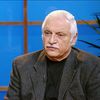The 2012 Intel Science Talent Search -- the nation's most prestigious pre-college science competition -- is underway and already tells us much about our nation's quest to engage and prepare future scientists. Last week, it announced its 300 semi-finalists and received an extra burst of media coverage when it was learned that one of them was homeless.
The story of that talented student, Samantha Garvey of Brentwood High School on New York's Long Island, is captivating and inspiring -- and now even heartwarming, as she and her family have been provided a place to live by Suffolk County's Department of Social Services. At least now the high school senior who has applied to Yale and Brown universities has an answer to two questions that she raised with Newsday: "What's going to happen to my college applications? Where are they all going to go? It's scary."
But there are other remarkable features, worthy of national attention, already evident from the 2012 Intel Science Talent Search, whose semi-finalists were chosen from, according to the competition's announcement, 1,839 entrants representing 497 high schools in 44 states, the District of Columbia, and three overseas schools.
The semi-finalists came from 29 states, plus the Taipei American School. Six of those states had 10 or more semi-finalists, with the greatest number coming from New York (with 105), California (40), Maryland (18), Texas (15), Virginia (13), and North Carolina (10). Interestingly, that ranking does not correlate with the largest states by population, which are California (1), Texas (2), New York (3), Florida (4), Illinois (5), and Pennsylvania (6).
The cities or towns with the greatest number of semi-finalists are: New York City, N.Y. (with 25), San Jose, Calif. (20), Alexandria, Va. (11), Denton, Texas (9), Silver Spring, Md. (8), Durham, N.C. (7), Jericho, N.Y. (7), and Great Neck, N.Y. (6). Some of those communities' results are especially impressively, given the size of their populations. Jericho, N.Y., for instance, has a total population of 13,567.
Long Island's two counties -- Nassau and Suffolk -- together produced 61 semi-finalists. That's more than 20 percent of the national total of 300.
The schools with the greatest number of semi-finalists are: Stuyvesant High School, New York City, N.Y. (with 13), The Harker School, San Jose, Calif. (with 11), Thomas Jefferson High School for Science and Technology, Alexandria, Va. (11), Texas Academy of Mathematics and Science, Denton, Texas (9), Montgomery Blair High School, Silver Spring, Md. (8), Bronx High School of Science, New York, N.Y. (8), Jericho Senior High School, Jericho, N.Y. (7), and North Carolina School of Science and Mathematics, Durham, N.C. (7).
There is much that we can learn from these communities and schools -- and especially from their teachers. Behind each of these outstanding students is inevitably an extraordinary teacher, and in some cases that teacher is inspiring more than one semi-finalist -- as well as other students who may not be honored in this way, and still more who may have been honored in past years or will be in the future. This kind of excellence does not come without inspiring teaching.
But there is even more that we can learn from past winners of national science competitions. A year ago, Research Corporation for Science Advancement (RCSA), the foundation that I head -- and that is celebrating its Centennial this year as the nation's oldest foundation devoted wholly to science -- published an extraordinary book written by current or recent Harvard University undergraduates at the time, who had won major national science competitions. Success with Science: The Winner's Guide to High School Research is designed to encourage high school students to undertake research projects and compete in national science competitions. Underscoring the book's importance, the foreword was written by Nobel Laureate Dudley Herschbach, who won the Nobel Prize in Chemistry in 1986 and served as faculty adviser for the book.
The five co-authors, who discovered the joys of science and scientific research in high school, have all been nationally recognized at major competitions like the Intel Science Talent Search, the Intel International Science and Engineering Fair, and the Siemens Competition in Math, Science, & Technology. Through Success with Science, they provide readers with background information about the benefits of doing research, as well as practical advice on getting started on a research project, the elements of a successful research project, and specific opportunities and competitions, like those in which they competed. The how-to advice includes: using the scientific method to your advantage; writing a publishable research paper; making a professional show board or poster, and giving a winning slide presentation.
Success with Science: The Winners' Guide to High School Research -- by Shiv Gaglani with Maria Elena de Obaldia, Scott Duke Kominers, Dayan Li, and Carol Y. Suh -- is a great introduction for students to the world of national science competitions. It's available through Amazon.com, and at www.successwithscience.org.
The future of our national economic preeminence is rooted in science and technology, and it's imperative that the United States produce future scientists of world-class caliber. The semi-finalists honored by the Intel Science Talent Search have that potential. We as a nation should learn from them, their predecessors, their teachers, their schools, and their communities. They hold the key to our nation's future prosperity.
James M. Gentile is president and CEO of Research Corporation for Science Advancement (www.rescorp.org), which celebrates its Centennial -- 100 years of science advancement -- this year.
